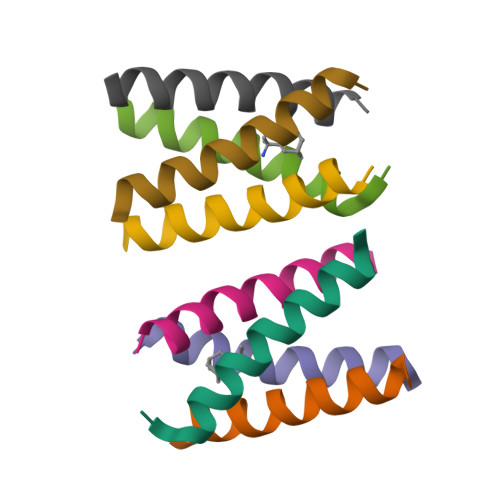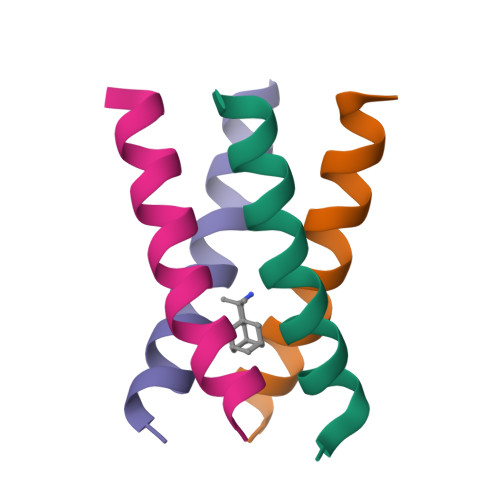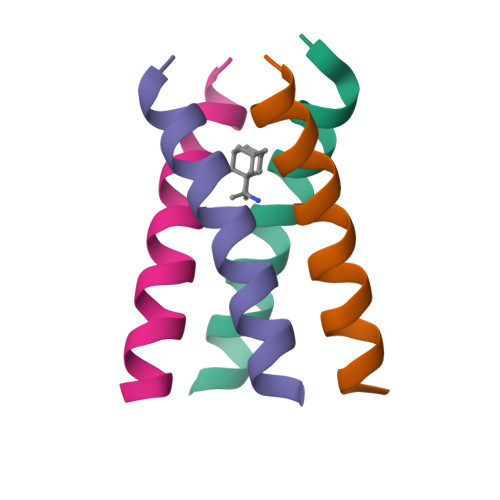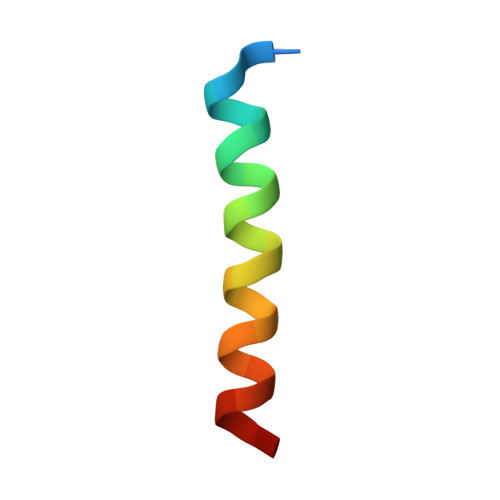Inhibitors of the M2 Proton Channel Engage and Disrupt Transmembrane Networks of Hydrogen-Bonded Waters.
Thomaston, J.L., Polizzi, N.F., Konstantinidi, A., Wang, J., Kolocouris, A., DeGrado, W.F.(2018) J Am Chem Soc 140: 15219-15226
- PubMed: 30165017
- DOI: https://doi.org/10.1021/jacs.8b06741
- Primary Citation of Related Structures:
6BKK, 6BKL, 6BMZ, 6BOC - PubMed Abstract:
Water-mediated interactions play key roles in drug binding. In protein sites with sparse polar functionality, a small-molecule approach is often viewed as insufficient to achieve high affinity and specificity. Here we show that small molecules can enable potent inhibition by targeting key waters. The M2 proton channel of influenza A is the target of the antiviral drugs amantadine and rimantadine. Structural studies of drug binding to the channel using X-ray crystallography have been limited because of the challenging nature of the target, with the one previously solved crystal structure limited to 3.5 Å resolution. Here we describe crystal structures of amantadine bound to M2 in the Inward closed conformation (2.00 Å), rimantadine bound to M2 in both the Inward closed (2.00 Å) and Inward open (2.25 Å) conformations, and a spiro-adamantyl amine inhibitor bound to M2 in the Inward closed conformation (2.63 Å). These X-ray crystal structures of the M2 proton channel with bound inhibitors reveal that ammonium groups bind to water-lined sites that are hypothesized to stabilize transient hydronium ions formed in the proton-conduction mechanism. Furthermore, the ammonium and adamantyl groups of the adamantyl-amine class of drugs are free to rotate in the channel, minimizing the entropic cost of binding. These drug-bound complexes provide the first high-resolution structures of drugs that interact with and disrupt networks of hydrogen-bonded waters that are widely utilized throughout nature to facilitate proton diffusion within proteins.
Organizational Affiliation:
Department of Pharmaceutical Chemistry , University of California , San Francisco , California 94158 , United States.



















